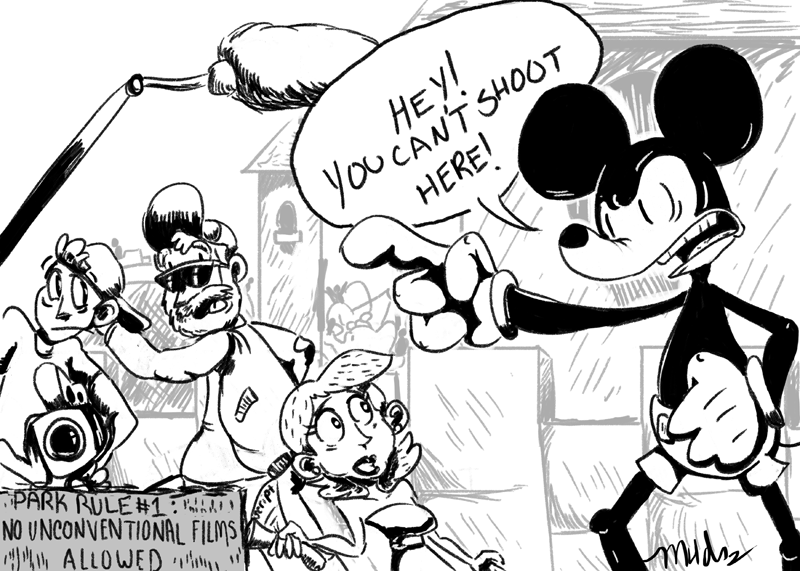In 2012, amateur filmmaker Randy Moore and a crew of cameramen and actors ventured into the dark world of Disney theme parks. They spent 10 days at Disney World in Orlando, Fla. and two weeks at Disneyland in Anaheim, Calif.
After the conclusion of their visits, they boarded a plane to South Korea. Why did the crew polish off their Disney vacation with a flight out of the country? Because while visiting the Disney parks, Moore and his crew shot a full-length feature film on location.
Moore’s film, “Escape from Tomorrow,” premiered at the Sundance Film Festival in January 2013 and was subsequently screened at Roger Ebert’s film festival in April 2013. The film instantly became the rage of the two festivals, generating dramatic responses to the film’s abstract visual style, originality and – most of all – its undeniable subversion of legal protection over Disney properties. The production team released a trailer on Sept. 11, 2013, garnering a massive surge of Internet attention.
The crew also announced a planned theatrical and digital release date of Oct. 11, 2013. Thus far, Disney hasn’t released any official statement regarding the film, although there seems to be confident speculation that the corporation is distinctly aware of the film. The film doesn’t appear to paint Disney in the best light, and there is no telling what will happen in the next month as the release date approaches.
This film has to be released.
Moore and his crew are not your typical Hollywood filmmakers. They seem to have limited interest in profitability and a strong predilection towards subversive and innovative filmmaking. We live during a time when heightened corporate control seems commonplace. Propelled by concept alone, this film charges through the multi-faceted barriers of corporate America.
The crew has civilly disobeyed copyright statutes in order to make a social statement about one of the most household corporate names in the world.
Furthermore, the recent state of technological progress has erred towards introverted improvements of convenience rather than out-of-the box innovation.
These augmentations to widespread items like cell phones and computers match the current corporate culture geared towards short-term profitability. These “improvements” have been manifested cinematically through increases in visual and audio technology in order to increase the “realism” of profitable cinema.
However, this film is set to stand on an entirely different platform. Most recent progress in cinema works on building a nicer-looking box, whereas this film appears to be an opportunity to destroy the box and build something entirely different.
There is no denying that the production of this film subverted the law by illegally filming at Disney parks. Whether you agree with it or not, breaking the law is breaking the law. I do not support this film or consider this film “creative” because it broke the law.
I think that if anything, the fact that it did this is an unfortunate inconvenience. The reason I support this film is because it has the potential to stand as a benchmark in film innovation.
Whereas most benchmark films of the 20th century are based on technical and narrative innovations, this film transcends those apparent confines.
The idea of filming with complete discretion is not necessarily new, but it has never been done as such an audacious infiltration of a corporate source of entertainment. The film represents the right for Americans to qualify and criticize a carefully-calculated image; an image that is aimed directly at producing profit.
If Disney Corporation does not want the world to see this film, and they block its release, they are only providing further evidence as to why it needs to be seen. Americans need to know that they do not have to contemplate the way businesses present themselves on their own.
People need to be exposed to or at least given the opportunity to engage in public distortion of American entertainment, even through fiction.
Robert Weisblatt is a College junior from Belle Mead, N.J.
Cartoon by Mariana Hernandez
The Emory Wheel was founded in 1919 and is currently the only independent, student-run newspaper of Emory University. The Wheel publishes weekly on Wednesdays during the academic year, except during University holidays and scheduled publication intermissions.
The Wheel is financially and editorially independent from the University. All of its content is generated by the Wheel’s more than 100 student staff members and contributing writers, and its printing costs are covered by profits from self-generated advertising sales.




Thanks for sharing your thoughts on Robert Weisblatt.
Regards